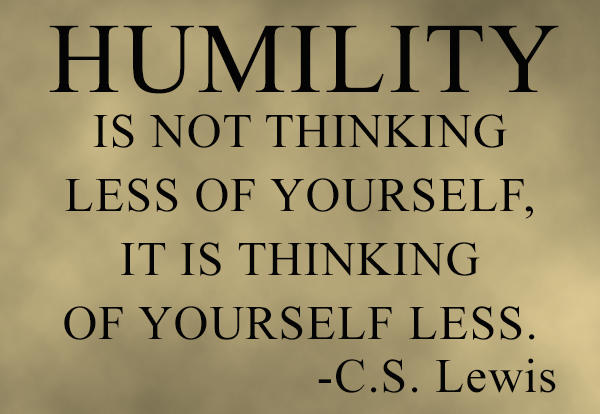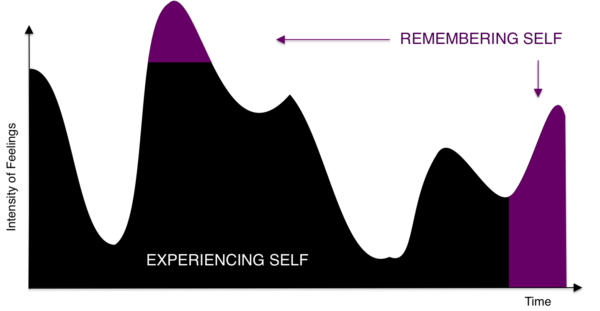Being both a student and practitioner of leadership, I keep my head on a swivel to identify leaders from whom I can learn, peers with whom I want to partner, and juniors who show great promise. I also am on the lookout for seniors, peers, and juniors who have yet to get it. It’s true, everyone with whom I work falls into one of three categories:
One: People with whom I want to learn, work, and share
Two: People whom I want to help develop
Three: People who have more admiration for the wake others have made than the course we are steering
There is not one single characteristic that gives me a reason to bin an individual into one of these categories and it is not impossible for an individual to move rather nomadically from one bin to the next. What separates people into these bins is HOW they lead. I am a firm believer that HOW an individual chooses to lead is at least as significant as the results we deliver. It shouldn’t come as a surprise that those who lead in a way I personally value (and I do my best to emulate what it is I truly value in a leader) fall squarely into category one. Those are the allies I refer to as the “Coalition of the Doing”. Category two is made up of people who show great promise, are truly interested in realizing their potential, and are likely to see value in the way those of us in “The Coalition” go about our business. They may not yet possess the skills necessary to share our HOW, but they are making deliberate efforts to develop and deserve the coaching necessary to polish their HOW. These individuals are the ones in whom I, and other members of “The Coalition”, take a personal interest and do our best to develop as proteges. The third are those who may or may not have started out in another category, but by showing their authentic selves, have demonstrated their commitment to the status quo or may even have self-identified as a person who is working against the culture those of us in “The Coalition” are attempting to foster.
Believe it or not, we self-identify each time we open our mouths, make a decision, or execute a task. Last week I delivered a talk in front of a few hundred coworkers, as well as countless others watching the video as it streamed, and still others who watch the posted talk (still working on getting a copy to share with a wider audience). The talk was called “Leading at the Intersection”, where I presented myself not in a regulation Navy uniform, but in a customized hoodie (thanks to my wife) that included my rank insignia on the sleeve. The intent of the “costume” was to represent the cultural intersection between Silicon Valley (hoodie à la Mark Zuckerberg) and traditional military culture (thus the rank insignia adorning it). I also wore a Lorax shirt as a means of illustrating that I was, in fact, speaking not only for myself but for many of the Sailors with whom I lead (they were represented by the Truffula Trees). I did this not as a means of self-promotion, but to promote the cause to which I and many others are committed. I wanted to self-identify in front of a large audience that I was but a member of a tribe interested in developing a culture that would truly allow our millennials and digital natives (they are both the majority and future of our military) to reach our collective potential. By publicly expressing my personal HOW, I was letting those listening that I (we) was (were) happy to join an existing tribe, welcome new members to ours, or a combination of the two…that was my WHY for the day and continues to be part of my everyday. In the aftermath, many people have thanked me for the talk, asked to learn more, and a few have even (re)committed to a partnership. Others have scoffed at what they perceived as my disregard for “proper military attire”, tradition, and “good order and discipline”. Those individuals have self-identified as members of category three.
I don’t make an effort to lead those who rest squarely in category three, though I continue to do my part to give them a reason to want to join the growing numbers who make up categories one and two. If I am in a position, I will make an effort to incentivize a change in their HOW, not through control, but through influence. If I am unable to give them the reason to migrate our way, I do hope the team at large gives them a reason to find another team.
I recently mentored a peer who is aspiring to serve as a commanding officer. In our conversation, I noticed his use of pronouns, prepositions, and directional language. After listening to him re-enforce his commitment to specific (and, in my opinion, flawed) word choice, I offered him the following advice:
“Real leaders refrain from using the pronouns “I” or “me” in favor of “we” and “us”; real leaders acknowledge that no one works “for” us, we all work “with” each other; real leaders are just as prone (if not more so) to speak of the horizontal/peer-centric relationships we are building as we are of the vertical relationships that are hardwired into our culture.”
I firmly believe that real leaders are committed to a HOW that is founded on teamwork and collaboration. Real leaders relish influence without concern for control. Real leaders care enough to question, refine, and (re)commit to our leadership philosophy on a regular basis. Real leaders despise the status quo and are committed to continual improvement. Real leaders value input from and empower the most competent members of their team with little regard for the rank they wear. Real leaders let their actions speak to the commitment we have to serve others.
- How would you characterize your HOW?
- What pronouns and prepositions do you default to?
- Are you more committed to lead WITH your team in a way that allows all to flourish or are you all in as you lead within your comfort zone?




This is a sure fire conversation starter.
I think there is some merit to your post. However, to blatantly throw people in category three because they disagree with some of your approaches is somewhat brash and abrasive. Is that true team ball?
It’s certainly possible (highly probable) I am reading to much into your points.
Thanks for the comment. People don’t fall into category three because they disagree with my HOW. People fall into category three because I see little value in their HOW. If we are in fact the average of the five people we spend the most time with, I don’t want to spend time with people who execute a me-centric, destructively critical, and/or legacy-grounded HOW. Life is far too short to spend it with people who don’t inspire us, give us reason to smile, and/or make us better. It’s less about who we choose not team with, and all about who we make a part of our team. Standards are important and I may be overly sensitive to what I perceive to be a flawed HOW, but in my opinion a team is not a team if we aren’t committed to a shared HOW.
Thanks for the reply, nice explanation. Thanks again.
I firmly believe in servant leadership from up and down the chain of command. It may sound corny or dated, but when no one cares about who gets the credit the entire organization wins.
Great thought provoking post.